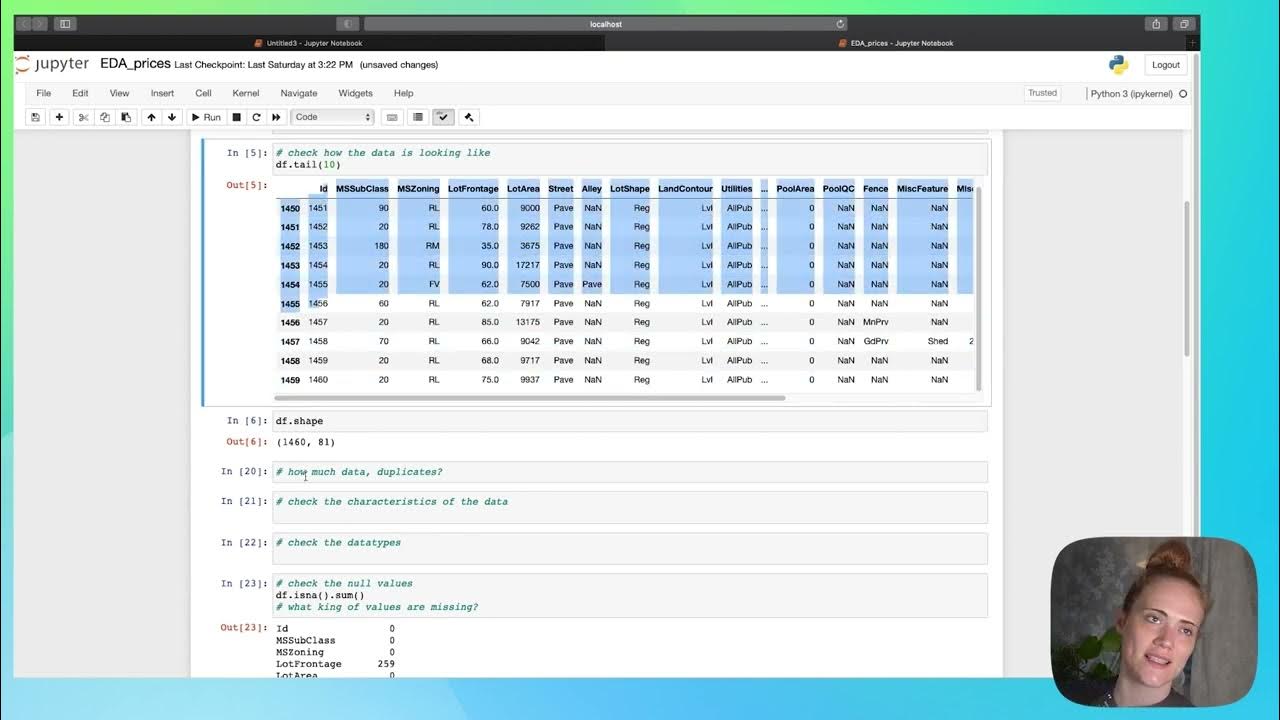STATA | DATA IFLS | REGRESI TOBIT
Summary
TLDRThis video discusses the application of microeconometrics for impact evaluation using the IFLS data set and a case study from Indonesia. The presenter walks through the process of cleaning and preparing data for Tobit regression analysis, focusing on variables like working hours, land ownership, and demographic factors such as age, gender, and household structure. The regression analysis aims to explore the relationship between land area, child labor, and household characteristics, with key insights about the impact of land ownership, age, and household gender roles on children's working hours. The video concludes with interpretations of the Tobit regression results and provides practical insights for similar studies.
Takeaways
- 😀 The script discusses microeconometrics for impact evaluation, specifically using IFLS data and regression analysis in Stata.
- 😀 A case study from Indonesia is used to illustrate the analysis, which highlights a paradox where larger families with more land have children working more.
- 😀 The case study by Indrasari in 2019 uses Tobit regression to analyze the relationship between land size and children's working hours.
- 😀 Key variables in the analysis include working hours (dependent variable), land (independent variable), and control variables like age, gender, KKP (female head of household), and adults in the family.
- 😀 The IFLS 5 dataset is used for a sample of children aged 5 to 14 from farming families.
- 😀 The first step in data preparation involves identifying variables in the dataset and the respective books and sections where they are located.
- 😀 Data cleaning involves filtering relevant records, replacing missing values with zero, and creating new variables such as land area in hectares.
- 😀 Data merging is performed to combine different datasets based on the HH ID to form a comprehensive dataset for analysis.
- 😀 Descriptive statistics are calculated to summarize the dataset, showing average working hours, land area, age, gender, and the presence of female heads of household.
- 😀 A Tobit regression is run to estimate the impact of land on children's working hours, and the results are presented with marginal effects for censored and truncated samples.
- 😀 The interpretation of results shows that more land and older children correlate with increased working hours, while children from female-headed households work fewer hours compared to those from male-headed households.
Q & A
What is the main objective of the case study discussed in the video?
-The main objective is to investigate whether the paradox found in Indonesia—where families with more children and land have children working more—still holds, using Tobit regression on IFLS data.
What regression method is used in the case study to analyze the data?
-Tobit regression is used because the dependent variable, working hours, is censored (many observations have zero working hours).
What is the dependent variable in the regression model?
-The dependent variable is the number of working hours, represented by the variable `dl58a` in the dataset.
What are the key independent variables in the regression model?
-The key independent variables are land (measured in hectares), age, gender, the presence of a female head of household (KKP), and the number of adults in the household.
Why was Tobit regression chosen for this analysis?
-Tobit regression was chosen because the dependent variable, working hours, is censored, meaning many observations have zero working hours, which requires a specialized regression model that can handle such data.
How were the data for working hours processed in Stata?
-The data for working hours was cleaned by keeping only farm workers (`dl2Type = 2`), renaming variables, replacing missing values with zero, and labeling the variable for clarity.
How was the land area variable modified in the analysis?
-The land area variables (`ut00_BH` and `ut00_BM`) were combined and converted to hectares, with measurements in meters adjusted accordingly.
What is the significance of the variable 'KKP' (female head of household) in the analysis?
-'KKP' indicates whether the head of the household is female. The analysis shows that children in female-headed households work fewer hours compared to those in male-headed households.
What is the average number of working hours in the sample, and what does this indicate?
-The average number of working hours is 0.24 hours, which indicates that most children in the sample work very few hours, with many reporting zero working hours.
What were the key findings from the Tobit regression model?
-Key findings include that every additional hectare of land increases children's working hours by 0.23 hours, each year of age increases working hours by 0.18 hours, and male children work more hours than females. Additionally, children of female heads of households work fewer hours.
Outlines

This section is available to paid users only. Please upgrade to access this part.
Upgrade NowMindmap

This section is available to paid users only. Please upgrade to access this part.
Upgrade NowKeywords

This section is available to paid users only. Please upgrade to access this part.
Upgrade NowHighlights

This section is available to paid users only. Please upgrade to access this part.
Upgrade NowTranscripts

This section is available to paid users only. Please upgrade to access this part.
Upgrade NowBrowse More Related Video

EDA - part 1

Model Monitoring with Sagemaker

Study Designs (Cross-sectional, Case-control, Cohort) | Statistics Tutorial | MarinStatsLectures

Problem Solving with Data Analytics | Google Data Analytics Certificate

MFG1904 #07 Geokronologi - 4 Contoh Geokronologi Relatif

REGRESI DENGAN DUMMY VARIABEL DUA KATEGORI Oleh Agus Tri Basuki Part 1
5.0 / 5 (0 votes)